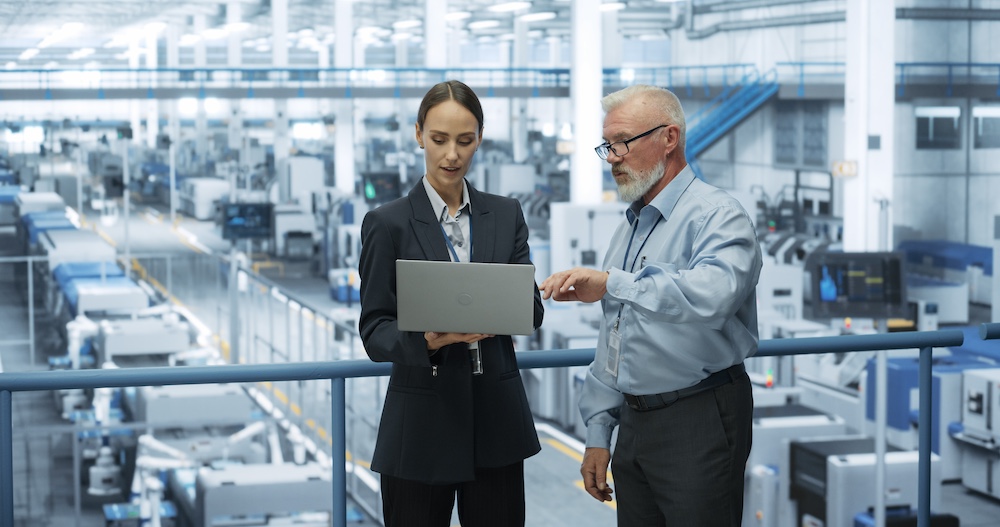In the rapidly evolving landscape of manufacturing, the connected workforce has emerged as a pivotal force that drives innovation and efficiency. Organizations are transforming traditional work environments by connecting human intuition and advanced technologies to facilitate seamless collaboration. This shift doesn’t just offer benefits to organizations—it’s a competitive necessity in today’s fast-paced market. Here’s what you need to know about building a connected workforce.
A connected workforce empowers manufacturing teams to enhance product design, streamline processes, and increase productivity across the entire product development cycle.
Understanding the Connected Workforce
Connected Workforce Definition
 A connected workforce is an integral component of Industry 4.0, which emphasizes the fusion of emerging technologies and human-centric strategies. It’s supported by a digital transformation strategy that empowers teams with powerful technology and real-time data to improve collaboration. It’s not just about the technology; it’s about integrating human workers with digital systems to work more efficiently.
A connected workforce is an integral component of Industry 4.0, which emphasizes the fusion of emerging technologies and human-centric strategies. It’s supported by a digital transformation strategy that empowers teams with powerful technology and real-time data to improve collaboration. It’s not just about the technology; it’s about integrating human workers with digital systems to work more efficiently.
Why You Need a Connected Workforce
Integrating a connected workforce enables teams to be more informed, efficient, and innovative in meeting the demands of modern manufacturing. It provides a competitive edge to organizations looking to thrive in a congested market. By leveraging modern solutions such as IoT, augmented reality (AR), and collaboration tools, teams are more agile than ever before.
Organizations that prioritize building a connected workforce are better positioned to achieve sustainable growth and maintain a competitive edge in the market.
Connected Workforce Benefits
Organizations that champion a connected workforce see many benefits, both at the front-line worker level and at a higher ROI level:
- Increased visibility into frontline work and across all teams. Better visibility tools make it easy to address issues quickly, increasing productivity.
- Better communication is enabled through real-time reporting tools and remote assistance.
- Reduced costs with increased efficiency and fewer reworks as issues are addressed earlier and faster during manufacturing.
- Enhanced safety with on-demand access to critical information and AR tools that enable workers to view this information without taking their eyes off their surroundings.
- Improved productivity and efficiency as everyone within the manufacturing process has access to the information they need, whenever they need it.

Getting Started with a Connected Workforce
Your connected workforce can’t be built overnight. First, you have to consider how a connected workforce fits into your culture and your larger digital transformation strategy.
It all starts by fostering a culture of collaboration, showing how automation is a helpful tool and not a replacement for human work. This will need to be followed with investments in the right technology. It’s important to take the time to research the tools and solutions that will work best for your unique scenario (reach out to us if you need help). Lastly, to fully integrate the benefits of the connected workforce, your teams will need to be trained on these new processes. The solutions you invest in will only perform as well as the people behind those solutions.
Depending on how far into your digital transformation journey your company is, you may or may not be ready to plunge headfirst into building your connected workforce. Every journey is unique, which is why we recommend getting started with a trusted partner like NxRev. We offer the full suite of PTC products and can help you determine which combination of solutions is right for your organization’s needs.
To get started, contact us.
